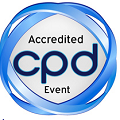
Lukas Dvorak
Technical University of Liberec, Czech Republic
Title: Influence of hydrogen peroxide and sodium lactate application on dehalogenation bacteria responsible for degradation of chlorinated ethenes
Biography
Biography: Lukas Dvorak
Abstract
Due to the extensive use in industry, chlorinated ethenes occur as common pollutant of environment. As it is environmentally persistent pollutant, its natural biodegradation is very slow. Moreover, natural processes can result in more hazardous by-products as cis-1,2-dichloroethene and vinyl chloride. There are several methods for removing chlorinated ethenes or stimulation of natural biodegradation. They are based on injection of chemical agents into remediation wells; along with natural processes this represents cheap and effective approach. In this study, influence of injection of hydrogen peroxide and sodium lactate on dehalogenation bacteria was examined. Changes were assessed through wide spectrum of molecular genetic markers (16S rRNA gene of dehalogenation bacteria Dehalococcoides spp., Desulfitobacterium, Dehalobacter and reductive dehalogenase genes (vcrA, bvcA) responsible for
dechlorination of vinyl chloride) along with chemical analyses. Application of hydrogen peroxide led to rapid decrease in all markers below detection limit. However, after 13 days, relative abundance of bvcA gene and Desulfitobacterium increased up to 9 times and 16 times respectively; compared to levels prior to injection. Most values returned within one month after application. Only negligible changes in chlorinated ethenes concentrations were, however, detected, likely due to low dose of hydrogen peroxide. Injection of sodium lactate (substrate enhancing natural biodegradation) resulted in clear increase in marker levels. It indicated positive response of dehalogenation bacteria to biostimulation by sodium lactate. Seven-fold increase in Desulfitobacterium and three-fold increase in Dehalococcoides spp. accompanied with increase in vcrA gene was detected even after 70 days. Ongoing dehalogenation was also proven by increase in ethene concentration.

